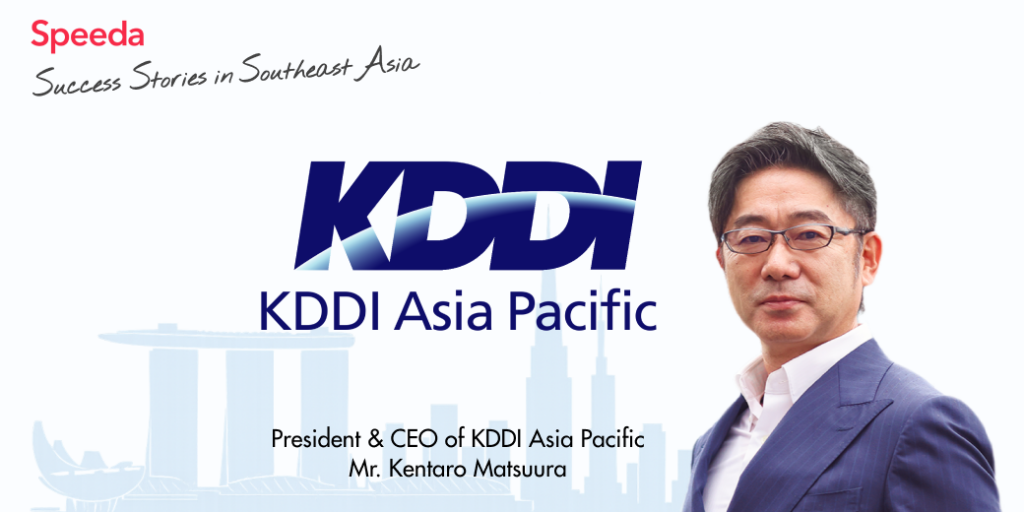Resource Center
How to Find Reliable Data for Transfer Pricing Benchmarking

Summary
Learn how quality data and method selection impact transfer pricing benchmarking, ensuring defensible, audit-ready compliance in Southeast Asia.
Benchmarking Ensures Defensibility in TP Compliance
| Benchmarking Upholds the Arm’s Length Principle
Transfer pricing (TP) benchmarking is a critical process for ensuring that intercompany transactions reflect fair market conditions. It underpins the arm’s length principle, which is the foundation of TP regulations globally, including those outlined by the OECD (Organisation for Economic Co-operation and Development) and local authorities such as Malaysia’s LHDN (Lembaga Hasil Dalam Negeri Malaysia). Without proper benchmarking, businesses expose themselves to compliance risks, including tax audits, penalties, and reputational damage.
At its core, benchmarking provides a comparative analysis of the terms, prices, and profit margins observed in similar transactions between unrelated parties. This comparison allows companies to justify that their intercompany dealings are consistent with market standards. It also serves as essential evidence in transfer pricing documentation, helping to pre-empt challenges from tax authorities who may suspect profit shifting or mispricing.
| Transparency Builds Credibility With Tax Authorities
For multinational enterprises operating across jurisdictions, robust benchmarking practices ensure transparency and consistency. They demonstrate to regulators that pricing decisions are not arbitrary, but grounded in observable, arm’s length market behaviour. This becomes even more important in Southeast Asia, where tax authorities are tightening enforcement and demanding more granular documentation.
TP benchmarking is not merely a compliance checkbox — it is a strategic necessity. Accurate benchmarking strengthens a company’s position during audits and supports sound internal pricing policies that align with regulatory expectations. It also signals good governance and reduces financial uncertainty, especially for firms engaged in cross-border trade.
Method Choice and Data Quality Directly Impact TP Outcomes
| Selecting the Right TP Method Is Critical for Accuracy
The accuracy and defensibility of a transfer pricing strategy depend heavily on two factors: the method used and the quality of the underlying data. The OECD outlines five key methods for calculating arm’s length prices — the Comparable Uncontrolled Price (CUP), Resale Price, Cost Plus, Transactional Net Margin (TNMM), and Profit Split methods. Each method serves different transaction types and business models, and choosing the wrong one can lead to mispricing and compliance risks.
For instance, the CUP method is ideal when reliable market data on comparable transactions exists, but such data can be scarce for intangible goods or services. In contrast, TNMM, one of the most commonly used methods in Southeast Asia, requires comprehensive financial data from comparable companies to determine an appropriate net profit margin. The method chosen must align with both the nature of the transaction and the availability of quality data — otherwise, the result will lack credibility.
| Data Quality Determines the Strength of TP Analysis
This is where data quality becomes a determining factor. Low-quality or outdated data can distort results, undermine the comparability analysis, and ultimately weaken a company’s transfer pricing position. Without accurate financials, companies may struggle to demonstrate that their intercompany pricing reflects arm’s length standards. Moreover, discrepancies between local reporting standards across ASEAN make comparability even more complex.
At the end of the day, selecting the appropriate TP method and backing it with reliable, structured data ensures regulatory alignment and reduces the likelihood of disputes. As scrutiny from tax authorities increases, the margin for error narrows. High-quality data, therefore, is not just a support tool — it is a cornerstone of effective and compliant TP analysis.
Comparability Analysis Underpins Every TP Justification
| FAR and Transaction Characteristics Drive Comparability
Comparability analysis lies at the heart of effective transfer pricing benchmarking. It ensures that intercompany transactions are evaluated against independent third-party dealings under similar conditions. Without it, companies cannot credibly argue that their internal prices align with the arm’s length principle — a core requirement under OECD guidelines and national frameworks such as Malaysia’s Income Tax (Transfer Pricing) Rules.
A robust comparability analysis involves evaluating several key factors: the characteristics of the transaction, functions performed, assets used, risks assumed (FAR analysis), contractual terms, and prevailing market conditions. These elements help determine whether two transactions — one internal and one external — are truly comparable. Even minor differences in business function or risk profile can make a benchmark unreliable, which is why the process must be thorough and well-documented.
| Data Reliability Determines the Strength of Comparables
In practice, the challenge lies in finding and validating truly comparable companies or transactions. This is especially difficult in Southeast Asia, where private company data can be limited or inconsistently reported. Analysts often need to make judgment calls about adjustments to financials, industry classifications, or risk factors to bring benchmarks in line with the tested transaction. The more reliable and granular the data, the more defensible the analysis becomes.
Comparability analysis is more than a procedural step — it is the mechanism through which transfer pricing claims gain substance. A well-executed analysis builds a credible link between internal and external pricing, reducing audit exposure and increasing confidence in the tax treatment of cross-border dealings.
Free data in ASEAN is Useful, but Scattered and Inconsistent
| Public Registries Provide Value, but Lack Depth
Transfer pricing benchmarking in ASEAN requires drawing from a wide array of data sources — each offering value, but none sufficient on its own. While free data from public registries and financial disclosures is a common starting point, it is often incomplete, inconsistent, and fragmented across the region. For example, platforms like Malaysia’s SSM, Thailand’s DBD DataWarehouse+, and Singapore’s BizFile provide partial access to company records. These sources may suffice for preliminary peer identification, but they rarely deliver the standardised, transaction-level data required for defensible benchmarking.
Compounding the issue is the fragmented regulatory landscape in Southeast Asia. Countries vary in disclosure requirements, digitisation levels, and language use. In jurisdictions such as Vietnam or the Philippines, data may only be accessible via physical delivery or behind paywalls. Even where financials are available, they may follow local accounting conventions or be reported in unstructured formats, complicating comparability. This lack of consistency not only slows analysis but also introduces risks when justifying intercompany pricing to tax authorities.
| Combining Sources Is Key to Reliable TP Benchmarking
To compensate, professionals must triangulate multiple sources. Public company reports are useful for their standardised, audited financials, including revenue breakdowns and related-party disclosures. However, these listed entities are not always representative of the smaller, private firms under review. Industry databases and third-party platforms can bridge that gap, especially where they offer structured data on private firms and allow filtering by geography, industry, size, and profitability.
Effective TP benchmarking demands integration. Businesses must move beyond single-source reliance and instead layer free regulatory data, public filings, and structured databases to form a comprehensive and comparable peer set. This triangulation not only strengthens compliance but also improves the efficiency and credibility of the benchmarking process across ASEAN’s complex data environment.
Structured Databases Enhance Accuracy and Streamline Compliance
| Filtering Tools Improve Benchmark Precision
Structured databases have become essential tools for businesses aiming to conduct transfer pricing benchmarking that is both defensible and efficient. These platforms offer far more than convenience — they transform raw financial data into usable insights by standardising formats, filling data gaps, and enabling precise comparability across industries and jurisdictions. In regions like Southeast Asia, where public data is often fragmented or inconsistent, structured databases significantly reduce the time and effort required to identify and validate appropriate benchmarks.
One of the key benefits lies in their advanced filtering and segmentation capabilities. Users can quickly narrow down comparables based on factors such as revenue size, profitability, industry classification, country of operation, and ownership structure. This level of specificity is critical for methods like TNMM, where selecting the wrong peer group can undermine the arm’s length assessment. Furthermore, many structured platforms integrate additional contextual information, such as M&A activity, shareholder structure, and business descriptions, which strengthens the economic rationale behind a chosen set of comparables.
| Seamless Integration Strengthens TP Documentation
Integrating this high-quality data into TP documentation is a matter of process optimisation. Most platforms allow users to export financials and benchmarking results directly into Excel, enabling seamless incorporation into local file reports or master file documentation. Companies can also link datasets to internal systems or documentation templates, ensuring consistency across reporting cycles and jurisdictions. For firms preparing for potential audits, structured databases provide clear audit trails and source transparency — both essential in demonstrating good-faith compliance.
Ultimately, using structured data is not just about meeting TP requirements; it’s about embedding data-driven discipline into the compliance process and reducing exposure to costly disputes.
Streamline Your Transfer Pricing Workflow
Accurate, structured data is the foundation of effective transfer pricing — and the right tools can make all the difference. Speeda is purpose-built to support businesses in Southeast Asia with their transfer pricing needs. With access to a comprehensive database of public and private companies across ASEAN, Speeda allows users to:
- Identify relevant comparables based on industry, region, and financial performance
- Access normalised financials and peer benchmarking
- Explore industry classifications and segment insights for stronger comparability analysis
Explore Speeda now—streamline your TP documentation, cut research time, and eliminate audit preparation uncertainty.



























